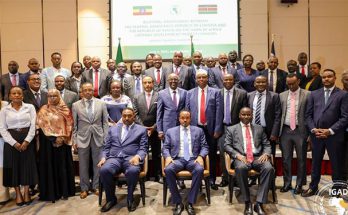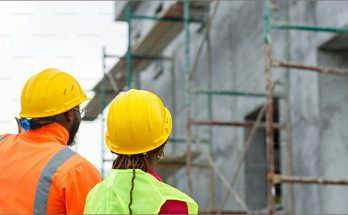 A new affordable housing fund that could enable persons earning between Rwf300,000 and Rwf700,000 in monthly wages to buy a house is due to start in July, officials at the Ministry of Infrastructure (MININFRA) have said.
A new affordable housing fund that could enable persons earning between Rwf300,000 and Rwf700,000 in monthly wages to buy a house is due to start in July, officials at the Ministry of Infrastructure (MININFRA) have said.
The Minister for Infrastructure, James Musoni, said the fund, estimated to be between $200 million and $250 million (about Rwf206 billion), is one of the key four strategies that the government has come up with to speed up the construction of affordable houses for more Rwandans.
The fund could be used to subsidise mortgage loans or directly provide funding to private developers at low interest rates.
The minister was yesterday appearing before the parliamentary Standing Committee on National Budget and Patrimony to present 2016/17 Budget Execution and defend 2017/18 Budget Estimates.
He was hopeful the facility would address the issue of high interest rates at which estates developers acquire construction loans from banks.
Up to 18 or 20 per cent interest rate increases the cost of housing once such interest is translated into the house value, the minister said.
“The Government will start a fund in July with intention to significantly reduce interest rates. But, those who will have access to the funds are first-ime home owners,” he said, noting that Cabinet will deliberate on the proposed fund.
Musoni also faulted people putting up expensive houses which are also taking a lot of space, and do not comply with the development master plan.
Vertical housing system
Other strategies for affordable housing include encouraging people to construct houses in a way that uses land efficiently – storey buildings or apartments.
He said those engaged in developing residential houses under storey-building arrangement will have the cost of infrastructure, including water, electricity, roads and fibre optic covered by the Government.
This is expected to make housing more affordable since such infrastructures take up about 30 per cent of the building cost.
To curtail high land costs, which result in high cost of accommodation, the minister said the Government had put in place a mechanism of availing land for affordable housing and also sell plots of land to house developers at reasonable prices to address land speculation.
Locally made materials
The third component, he said, is to encourage use of locally-made construction materials.
“People import expensive construction materials from abroad. We have been encouraging local, made-in Rwanda products which are also affordable,” Musoni said.
He cited local companies providing affordable construction materials, such as Building Solutions Factory that manufactures wall materials from compressing wheat straw fibres, East African Granite Industries (EAG), manufacturers of tiles; and companies that make roofing materials, among others.
“We are going to make this a condition. These materials should be more affordable than imported ones,” Musoni said.
MININFRA’s budget accounts for about 14 per cent of the national budget, which is a lot of funds that need efficient management and use to ensure that it serves the socio-economic development of the country, the minister noted.
MP Théobald Mporanyi said affordable housing and Integrated Development Programme (IDP) model villages would solve the issue of unplanned settlements which people resort to especially when they are expropriated to pave way to public interest projects.
Augustin Kampayana, the acting director-general of Rwanda Housing Authority (RHA), said there are already investors to venture into affordable housing projects both in Kigali and secondary cities.
Information from MININFRA shows that over 60 per cent of Rwandan households live in planned settlements.
Rwanda will need at least 340,000 housing units by 2022 based on findings from a 2012 study establishing needed residential houses.
In February, RHA announced that projects for 30,000 housing units in line with the government’s move to set up affordable houses have been identified of which about 1,500 houses were being built.



